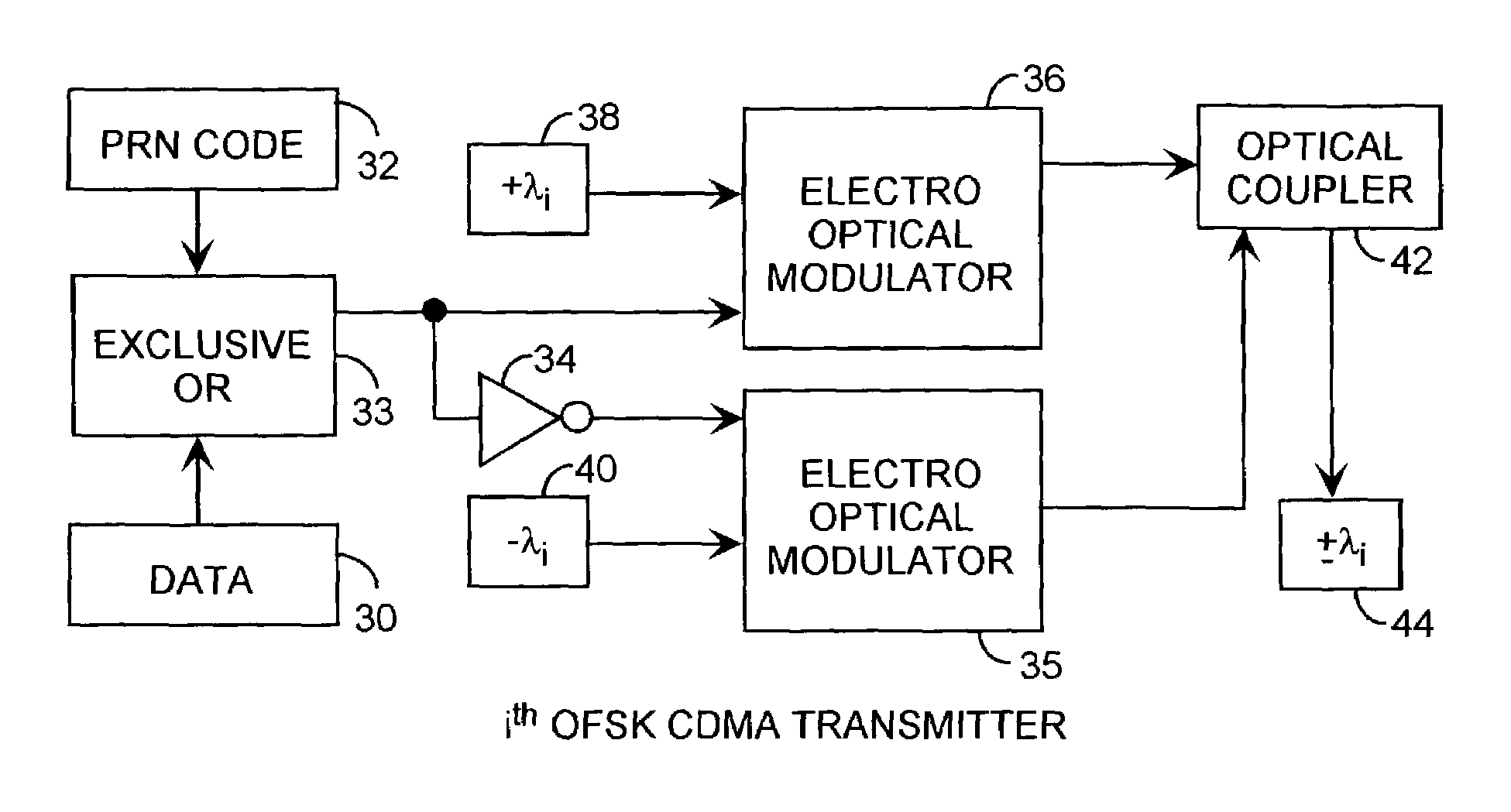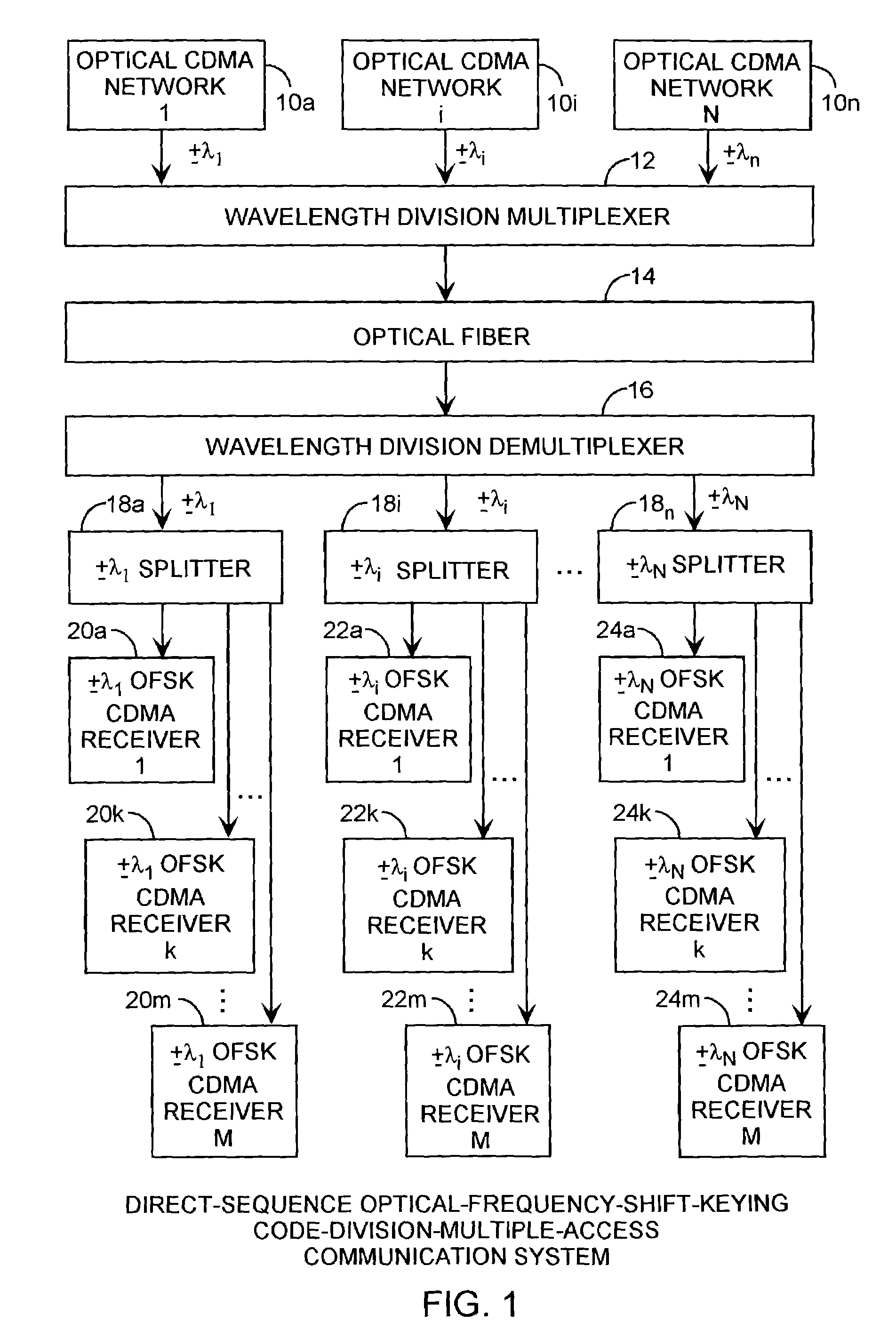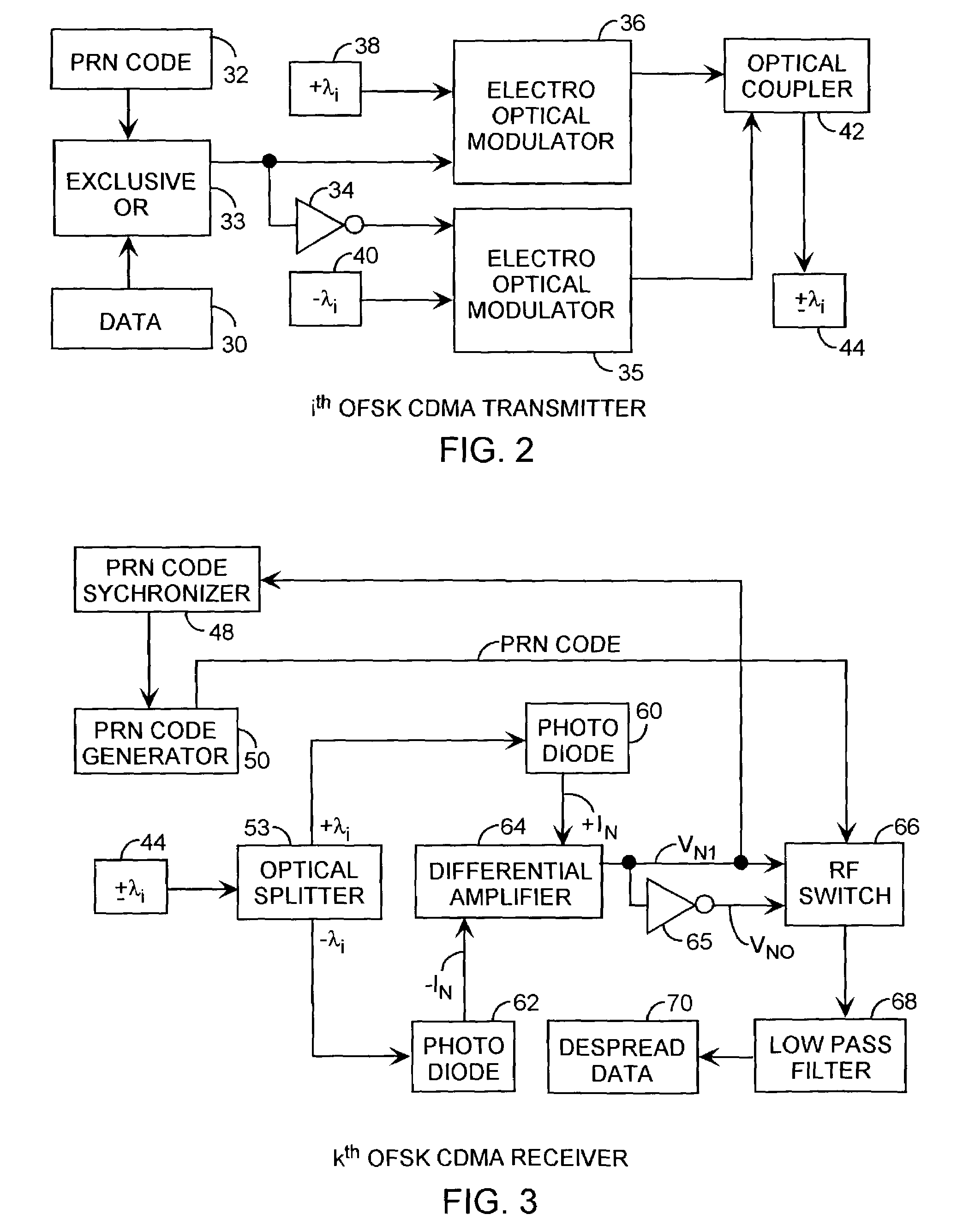Direct-sequence spread-spectrum optical-frequency-shift-keying code-division-multiple-access communication system
a technology of optical frequency shift keying and spread spectrum, applied in the field of spread spectrum code division multiple access systems and optical fiber communication systems, can solve the problems of difficult to encode the phase of an optical signal, non-coherent detection, and degraded communications, and achieve the effects of increasing the capacity of existing wavelength division multiplexing systems, increasing user base, and being immune to low source fluctuations
- Summary
- Abstract
- Description
- Claims
- Application Information
AI Technical Summary
Benefits of technology
Problems solved by technology
Method used
Image
Examples
Embodiment Construction
[0016]An embodiment of the invention is described with reference to the figures using reference designations as shown in the figures. Referring to FIG. 1, a direct sequence spread spectrum optical-frequency-shift-keying (OFSK) code-division-multiple-access (CDMA) communication system is preferably adapted for use in an N-channel dense wavelength division multiplexed (WDM) system. The system uses wavelength pairs, such as ±λi wavelength pairs, and is based on OFSK modulation where each pair of wavelengths ±λi is used to transmit code division multiplexed signals using direct sequence spread spectrum codes. Zero or one code chips of the spreading code are represented in the frequency domain by the ±λi wavelength pairs, where for example, +λi may represent a binary one chip and −λi may be a binary zero chip of the spectrum spreading code. Communication data is direct-sequence spectrum spread by the spectrum spreading code so that the data is modulated by the spectrum spreading code res...
PUM
 Login to View More
Login to View More Abstract
Description
Claims
Application Information
 Login to View More
Login to View More - R&D
- Intellectual Property
- Life Sciences
- Materials
- Tech Scout
- Unparalleled Data Quality
- Higher Quality Content
- 60% Fewer Hallucinations
Browse by: Latest US Patents, China's latest patents, Technical Efficacy Thesaurus, Application Domain, Technology Topic, Popular Technical Reports.
© 2025 PatSnap. All rights reserved.Legal|Privacy policy|Modern Slavery Act Transparency Statement|Sitemap|About US| Contact US: help@patsnap.com



